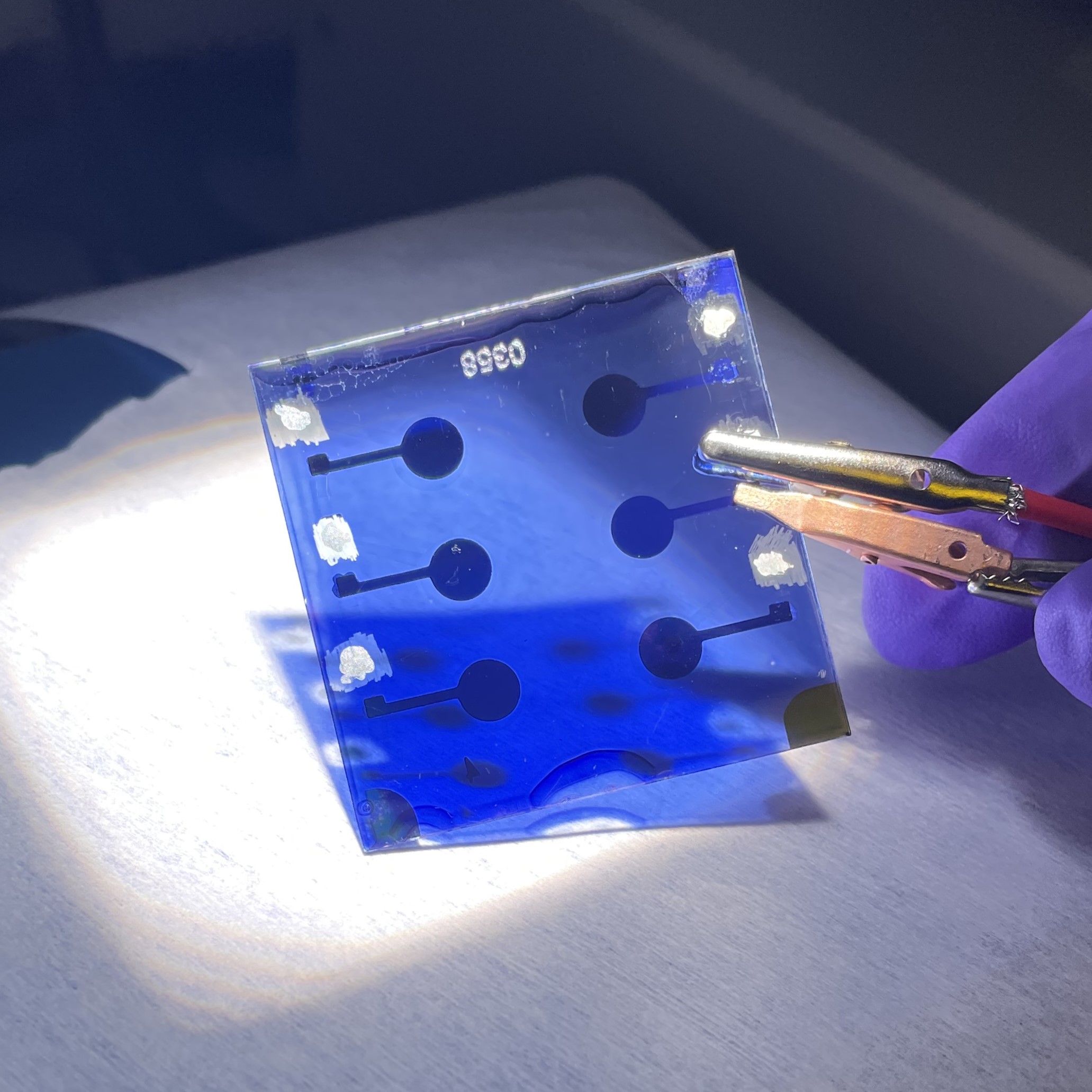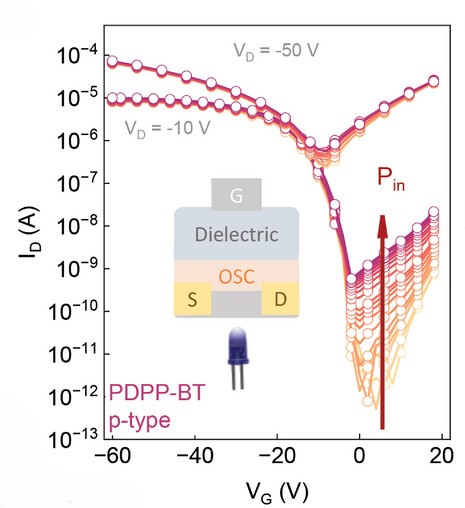Photodetectors
Group message: “Measure your noise levels accurately”
Electronic devices are now routinely used daily: computers, TVs, and in-house lighting have become cheaper, more compact and more energy efficient every year. The future of this technology is expected to be integrated into the human body to extend our abilities and strengthen our health. Organic photodetectors (OPDs) and Perovskite (PPDs) have many benefits over traditional inorganic technologies, including compatibility with flexible substrates. These devices can accurately convert near-infrared light into electrical current, making them ideal for health monitoring applications.
Organic Photodetectors
 The typical photoactive layer in OPDs consists of blending electron-donating and electron-accepting organic
polymers/small molecules. The widely accepted benchmarks for infrared OPDs consist of conjugated donor polymers
and small molecule non-fullerene acceptors. Interestingly, the chemical design of organic semiconductors with
relatively narrow and specific absorption spectra allows OPDs to be explored for selective narrowband photodetection,
with a special interest in the near-infrared (NIR) region. Our group efforts focus on:
The typical photoactive layer in OPDs consists of blending electron-donating and electron-accepting organic
polymers/small molecules. The widely accepted benchmarks for infrared OPDs consist of conjugated donor polymers
and small molecule non-fullerene acceptors. Interestingly, the chemical design of organic semiconductors with
relatively narrow and specific absorption spectra allows OPDs to be explored for selective narrowband photodetection,
with a special interest in the near-infrared (NIR) region. Our group efforts focus on:
i) the design of ultra-low bandgap organic semiconductors i.e., materials with absorption profiles extending over 2000 nm;
ii) the role of transporting layers;
iii) charge recombination processes leading to low noise values and high specific detectivity (D*).

